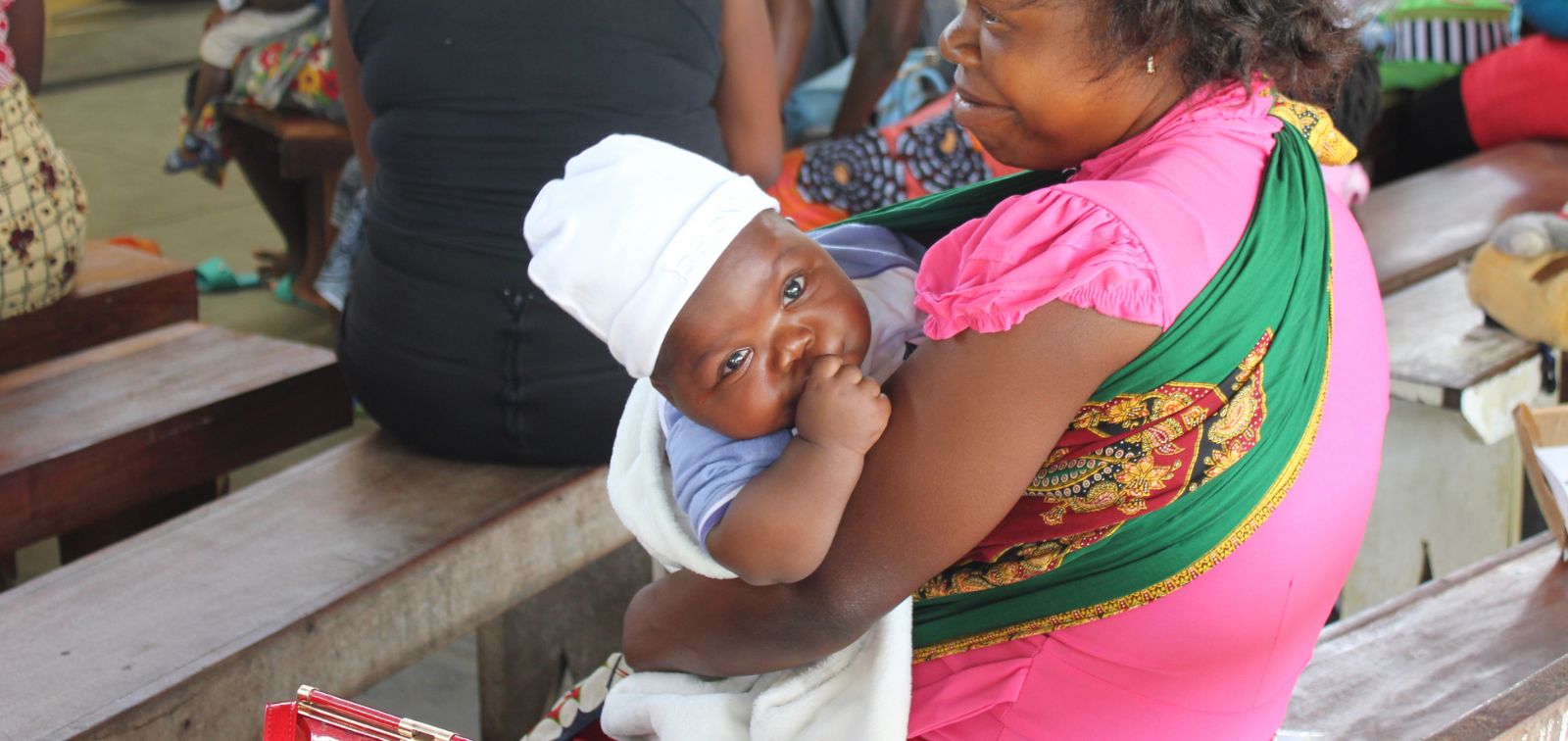Pneumonia contributes to 40.6% of deaths in children under five, says a study by the CHAMPS network
Another study by CHAMPS concludes that 98.9% of malaria deaths could be prevented through enhanced access to malaria control measures
08.02.2024
We now have detailed information on two major killers in children under five years of age – pneumonia and malaria - thanks to two new studies by the CHAMPS network, in which the Barcelona Institute for Global Health (ISGlobal), a centre supported by “la Caixa” Foundation, participated. This information, published in Lancet Child Adolescent Health and the Journal of Infection, will help to design evidence-based interventions and guide research efforts to reduce childhood mortality in high-burden regions.
Despite major progress in improving child survival in recent decades, nearly 14,000 children under five die every day, mostly in low-income countries. The Child Health and Mortality Prevention Surveillance (CHAMPS), led by Emory University, was launched in 2015 to track causes of death in children aged under five, across multiple sites in sub-Saharan Africa and Asia. To establish the cause of death, CHAMPS uses an innovative technique called minimally invasive tissue sampling (MITS), which was developed and validated by ISGlobal researchers.
Two new CHAMPS studies have focused on two of the leading killers in children under five - pneumonia and malaria - to better estimate the real contribution of these diseases to child mortality and to improve prevention and treatment strategies.
Pneumonia: high prevalence of co-infections
Pneumonia is the leading infectious cause of death in children under five, but identifying the cause (whether it’s bacterial or viral) is challenging. In this study, CHAMPS researchers analysed 1120 under-five deaths that occurred between December 2016 and December 2022 in six sub-Saharan countries (Ethiopia, Kenya, Mali, Mozambique, Sierra Leone, and South Africa) and one in Asia (Bangladesh). Using MITS and clinical data, the researchers found that pneumonia was involved in up to 40.6% of all childhood deaths. More than one pathogen (bacterial, viral and/or fungal) was behind 57.8% of pneumonia deaths. The most common bacteria were Streptococcus pneumoniae, Klebsiella pneumoniae and Heamophilus influenzae, while cytomegalovirus was the most common viral pathogen. In about two-thirds of the cases, pneumonia was most likely acquired in the community, while about one-third of cases were hospital-acquired.
Despite widespread use of the pneumococcal conjugate vaccine in all participating countries, S pneumoniae remained the leading cause of community-acquired pneumonia. “This means that the pneumococcal deaths were caused by serotypes not included in the current vaccine formulation or in children not fully vaccinated,” says ICREA researcher Quique Bassat, General Director of ISGlobal and co-author of the study.
The findings highlight the complexity of severe pneumonia cases, with a high prevalence of co-infections involving both bacterial and viral pathogens. The authors point to the need to review the clinical management of very severe pneumonia in low- and middle-income settings. For example, the currently recommended empirical treatment for community-acquired pneumonia in children would be inadequate for treating K pneumoniae. The resultss also highlight the need for research into new or improved vaccines against these pathogens.
Malaria remains a significant cause of childhood mortality
In another study conducted in the same seven countries, CHAMPS researchers led by Bassat focused on investigating malaria-related deaths. While the disease remains a major cause of death, particularly in children under five who are no longer protected by maternal antibodies but have not yet developed natural immunity to the disease, there is still much uncertainty about the true burden of malaria-associated mortality in endemic areas.
The researchers used MITS together with socio-demographic, clinical, laboratory and verbal autopsy data to determine the causes of death in 858 children aged 1-59 months. The proportion of malaria-associated deaths varied between countries: from 43% in Sierra Leone to 18% in Mozambique or 0.3% in Mali. Malaria was the sole infectious agent in 70% of these deaths, while bacterial and viral co-infections were identified in 24% and 12% of cases, respectively. “This high percentage of bacterial co-infections points to the potential benefits of giving antibiotics to patients with severe malaria,” says Rosauro Varo, co-primary author of the study.
Most child deaths could be avoided
The authors estimate that almost all malaria-related deaths (98.9%) could have been prevented. “Compared to non-malaria deaths, many of the malaria deaths are easily preventable through access to malaria control measures,” says Bassat. For instance, only 63% of children had received antimalarial drugs prior to death. In the pneumonia study, the authors estimate that two-thirds of the pneumonia deaths were potentially preventable. This confirms previous CHAMPS estimates that 82% of child deaths in low-income countries could be prevented. Notably, malnutrition was a dominant factor in pneumonia-related deaths and was present in one third of malaria and non-malaria deaths.
In addition to advancing research efforts, CHAMPS researchers hope that the findings of these studies will help guide global health agendas, policies and evidence-based interventions to reduce child mortality in these high-burden regions.
References
Mahtab S, Blau DM, Madewell ZJ et al. Post-mortem investigation of deaths due to pneumonia in children aged 1–59 months in sub-Saharan Africa and South Asia from 2016 to 2022: an observational study. Lancet Child Adolesc Health. 2024. Doi: 10.1016/S2352-4642(23)00328-0.
Ogbuanu IU, Otieno K, Varo R et al. Burden of child mortality from malaria in high endemic areas: results from the CHAMPS Network using minimally invasive tissue sampling. Journal of Infection. 2024. Doi: 10.1016/j.jinf.2024.01.006



